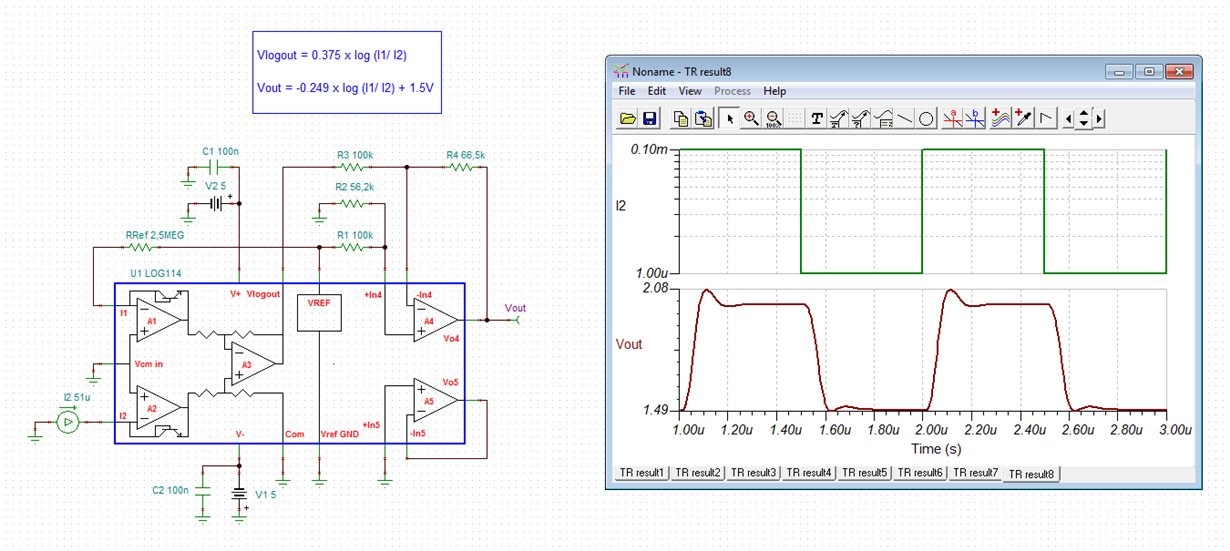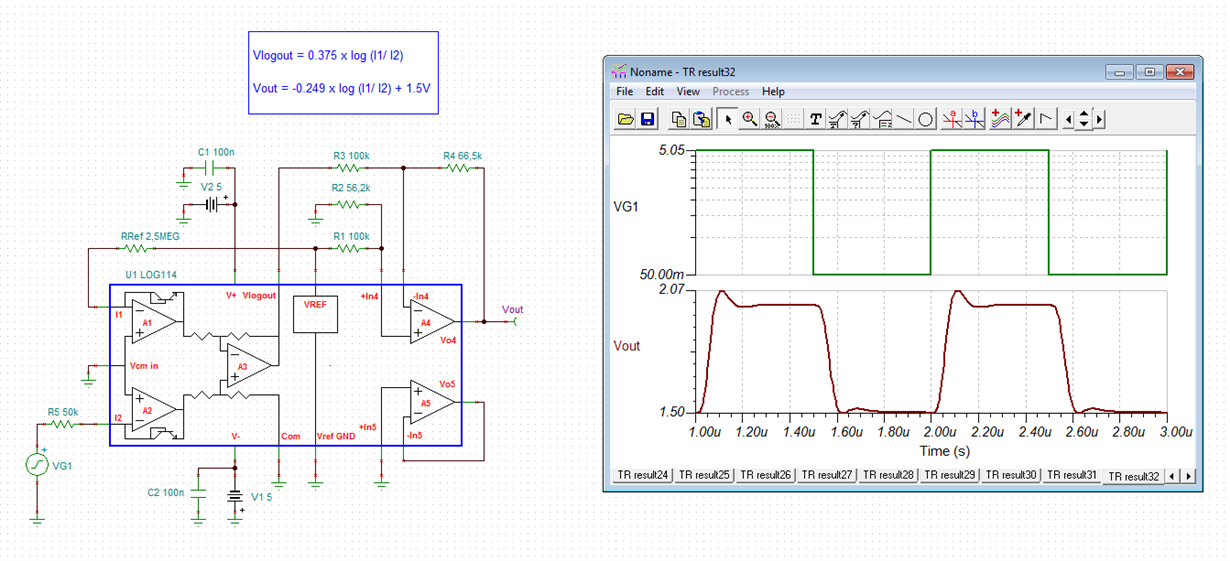Hi!
I've got a problem with LOG114, it does not match submicrosecond step response time as it should according to datasheet. My scheme has +-5V dual supply, I2=2,5uA and I am getting submicrosecond responce times only in area of at list 1-10mA input currents. If I try 1uA to 100uA or 1uA to 1ma or 100uA to 1ma square pulse it shows response times (10 - 90% rise time) greater than 1,5 - 3us. Datasheet states that response time should be less than 0,15us. Is there any resonable explanation for that? Tried already replacing IC with another LOG114, got same results.



